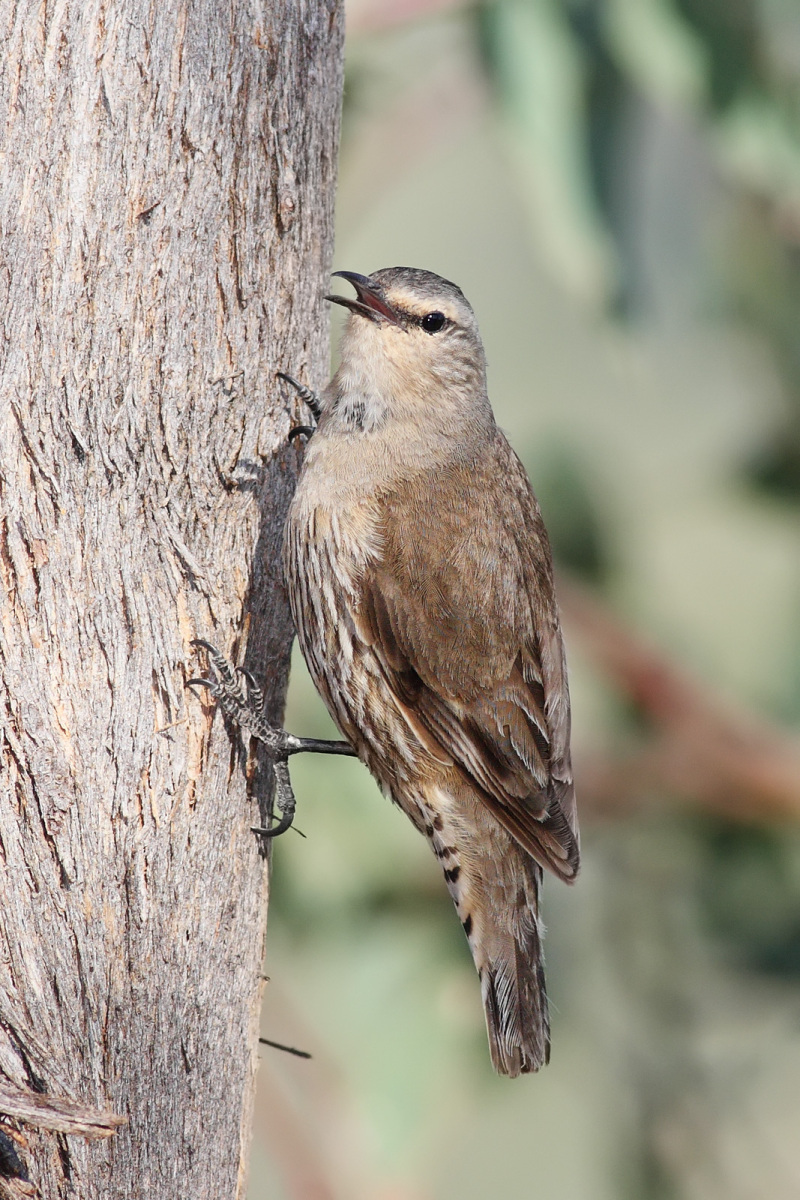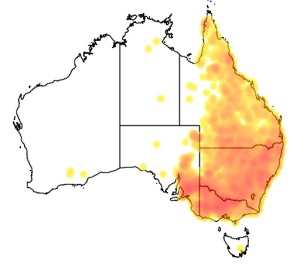
©Patrick_K59 on Flickr: Brown Treecreeper (Climacteris (Climacteris) picumnus), Rise and Shine Reserve, Clydesdale Victoria, Australia
Colours
Distinguishing features
Adult plumage is light grey-brown above with light grey face and neck, darker grey on the crown with dark ear-coverts. The supercilium is prominent and pale on adults, while grey and indistinct on juveniles. The throat is cream to white and pale brown on the breast. The lower breast is streaked with fine black-grey and white. In flight a dark wing-bar is visible. Sexes of the species differ in plumage, with the uppermost breast of the male streaked black and white, while the female has rufous and white streaking. Juvenile plumage is different to that on the adult with the hind-neck, nape, crown and forehead darker than that of adult males. (Wikipedia)
Size
- From 16 cm to 18 cm (Length of specimen)
Wingspan
- Up to 26 cm
Synonyms
Distribution
Distribution and habitat preferences
The bird, endemic to eastern Australia, has a broad distribution, occupying areas from Cape York, Queensland, throughout New South Wales and Victoria to Port Augusta and the Flinders Ranges, South Australia. The population has contracted from the edges of its pre-European range, declining in Adelaide and Cape York.
It is found in a diverse range of habitats varying from coastal forests to mallee shrub-lands, often occupying eucalypt-dominated woodland habitats up to 1,000 metres, avoiding areas with a dense shrubby understorey. (Wikipedia)
Diet
Roosting nocturnally and solitarily, the Brown Treecreeper forages during the day on the ground and on tree surfaces in small groups or pairs, feeding mainly on ants, beetles and insect larvae. While occasionally feeding on nectar, the Brown Treecreeper more often probes fissures, cracks and hollows of trees, gleaning and probing as it hops along logs or spirals up rough barked trees, spending more time foraging on the ground if a resident of an arid territory. (Wikipedia)


